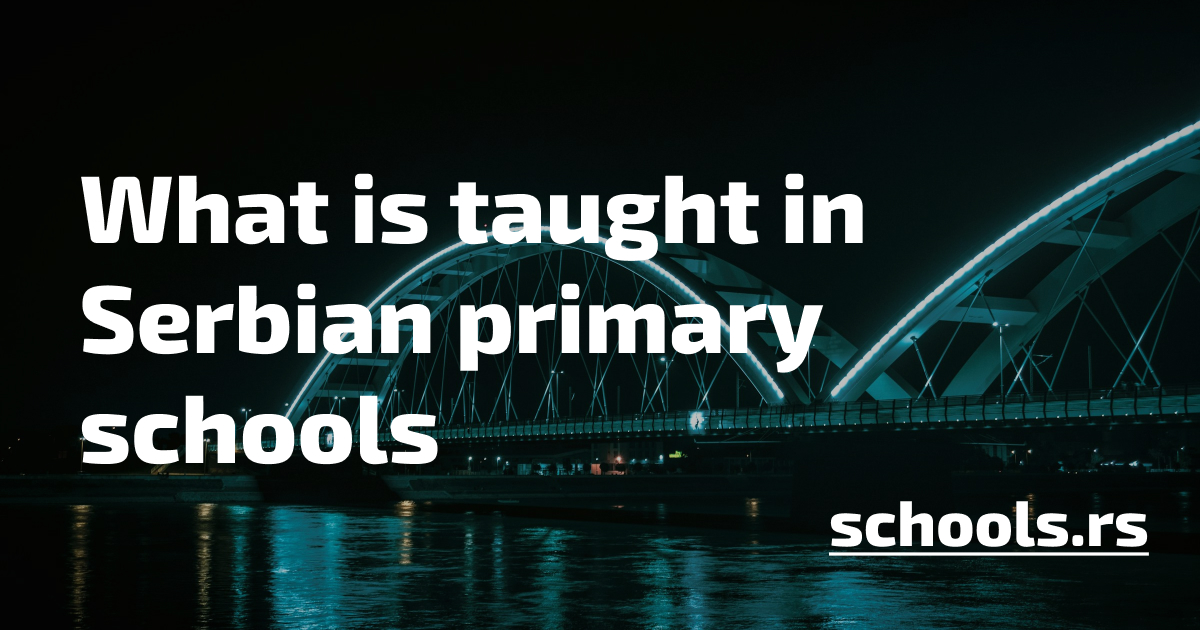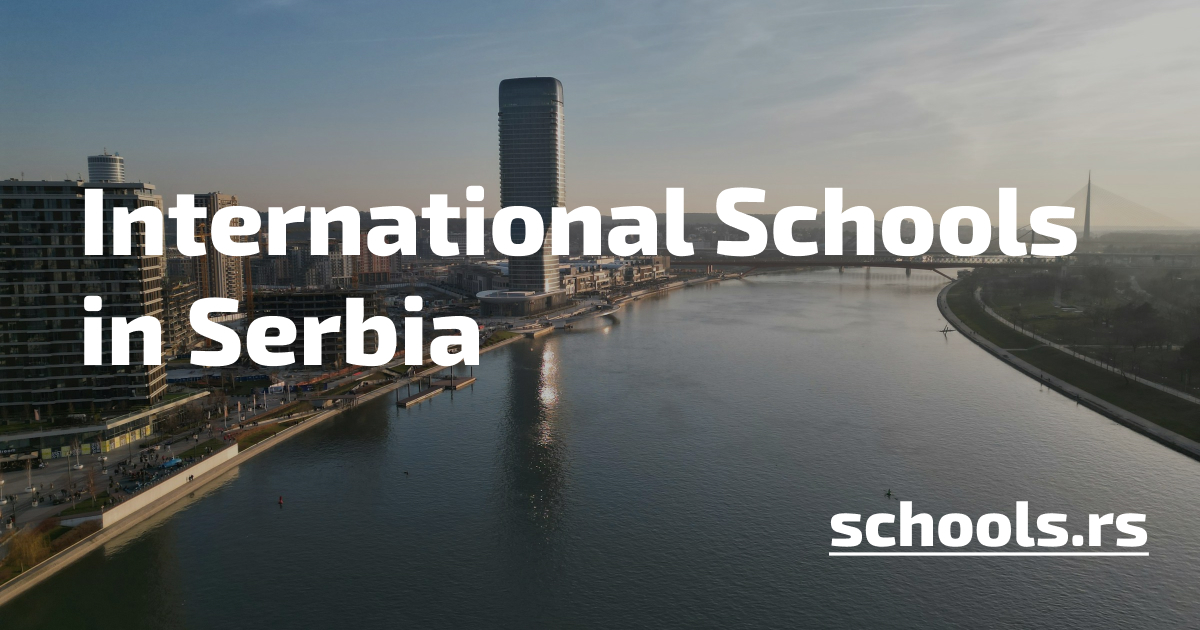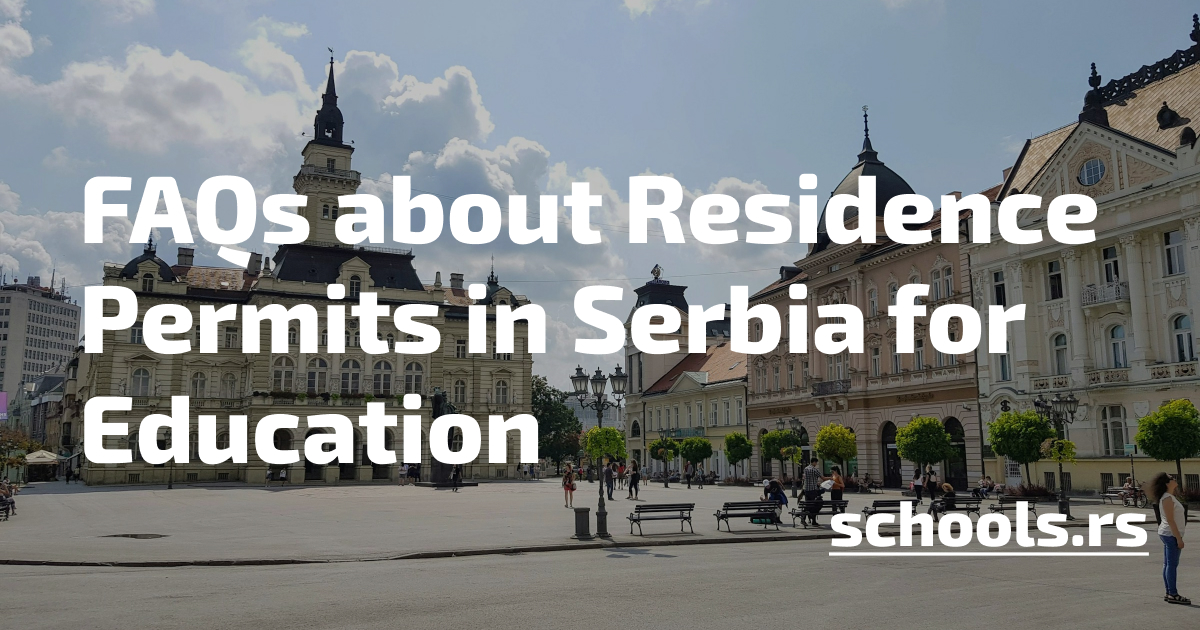Is Serbian school education any good?
By Pavlo Boyko · 5 minute read · Updated on June 6, 2024
Introduction
Serbia ranks 65th in the UN Education Index among all countries, with an expected average duration of education of 14.7 years1.
For comparison, countries above Serbia in the ranking include Russia (57th), Poland (36th), Austria (22nd), the USA (21st), UAE (17th), the UK (16th), Germany (7th), and Switzerland (1st). Countries below Serbia include Belarus (69th), Armenia (76th), Moldova (86th), and Ukraine (100th), with Somalia at the bottom at 193rd place.
This is a very rough indicator that provides a general idea of the level of Serbian education compared to other countries. In this article, we will examine the situation in more detail for two basic school subjects: mathematics and English, and try to draw cautious conclusions from a parent’s perspective.
Mathematics
We will analyze the level of mathematics teaching using PISA data2. PISA (Programme for International Student Assessment) is developed by the OECD3 and assesses the ability of 15-year-old students to use reading, mathematics, and science skills to solve real-life problems.
To understand, here is an example of a PISA task that assesses basic arithmetic skills and understanding of geometric concepts in real-life applications8:
Farmer’s Fence
A farmer wants to fence a rectangular field that is 120 meters long and 80 meters wide.
- How many meters of fencing is needed to enclose the entire field?
- If the fencing costs $2 per meter, how much will the entire fence cost?
The PISA test consists of many similar tasks covering various areas of knowledge and skills. The test is conducted every three years, with each country typically testing a representative sample of 5-10 thousand 15-year-old students. The most recent PISA data available is from 2022.
It’s also useful to know that average scores across all countries in PISA have been steadily declining over the past 15 years, and the rate of this decline is increasing. This fact characterizes general negative trends in school education, but it doesn’t specifically concern Serbia, so we won’t focus on it in this article.
According to the PISA 2022 results in mathematics, Serbia is exactly in the middle of the table, ranking 42nd out of 80 countries, right after Ukraine and before the UAE4, and below the OECD average:
PISA 2022 no longer includes Russia, but when it was, Russia ranked 30th in mathematics.
To understand whether this is good or bad, let’s compare with neighboring Balkan and Central European countries:
| Country | Math Score |
|---|---|
| Poland | 489 |
| Czech Republic | 487 |
| Slovenia | 485 |
| Hungary | 473 |
| Slovakia | 464 |
| Croatia | 463 |
| Serbia | 440 |
| Romania | 428 |
| Bulgaria | 417 |
| Montenegro | 406 |
| North Macedonia | 389 |
| Albania | 368 |
Serbia is in the middle of the table, better than Montenegro and Albania but worse than Hungary and Croatia, not to mention Poland and the Czech Republic. Western and Northern Europe are significantly ahead.
A slightly more detailed picture is provided by the percentage of test participants who scored high in mathematics. Here are the data (for 2018, but the picture hasn’t changed much):
Source: 5
It shows that the percentage of students with high scores in mathematics (Level 5 and above) in Serbia is almost three times less than in Poland and twice less than the OECD average. In other words, if a hypothetical student ranks in the top 5% in mathematics among peers in Serbia, they would rank approximately in the top 15% in Poland.
Of course, the national average result is better than nothing but provides little insight into the teaching quality at your specific school. It is no secret that in large cities, where most expats live, the overall living standards and education quality are higher than the national average.
PISA does not publish data by schools or cities. The level of mathematics in a particular school can be roughly understood by the results of final exams (Просечан број бодова на завршном испиту) and current grades (Просечан број бодова на крају разреда), which are published on the Моја средња школа website. We will soon write an article on how to interpret these data and a text on the quality of education in different regions and urban areas of Serbia.
English Language
We will assess the level of English using the EF English Proficiency Index data6. The latest available data are for 2023. It is important to understand that, unlike PISA, the EF Index measures English proficiency among adults who took the EF online test.
We assume that most people learn English in school, and the results among adults correlate with the level of school education. This is, of course, a significant assumption, especially considering the popularity of language schools in Serbia, but let’s see what conclusions we can draw from the available data and whether the situation with English differs from mathematics.
Serbia ranks 24th in the EF index and falls into the category of countries with a “High” level of English proficiency:
For comparison, Russia ranks 41st, Ukraine 45th, and Kazakhstan 104th.
Compared to its neighbors, Serbia looks like this:
| Country | English Score |
|---|---|
| Croatia | 603 |
| Poland | 598 |
| Romania | 596 |
| Bulgaria | 589 |
| Hungary | 588 |
| Slovakia | 587 |
| Serbia | 569 |
| Montenegro | 568 |
| Czech Republic | 565 |
| Slovenia | 558 |
| Albania | 533 |
Overall, the situation with the level of English is similar to what we saw with mathematics — significantly worse than Poland but better than Montenegro and Albania.
However, compared to Russia, there is a noticeable difference between mathematics and English: Serbia is significantly lower in mathematics, but significantly higher in English proficiency.
Given the caveat above, we won’t draw deeper conclusions from these data.
Conclusions
What does this teach us as parents of schoolchildren in Serbia? Practical conclusions will, of course, depend on your goals, your children’s inclinations, the conditions of education at a particular school, your budget for education, etc. But here are a few general conclusions:
-
Compared to European countries and Russia, Serbia generally lags in the level of mathematical knowledge. This may mean that you will need additional math classes to enroll in a foreign school or university.
-
The level of English proficiency in Serbia is higher than in Russia, so transitioning from a state Russian to a state Serbian school may require only minor additional preparation. However, to enter foreign educational institutions, additional classes will likely be needed again.
-
The standard school curriculum in most Serbian schools is usually sufficient for admission to local secondary schools and universities, but to get into prestigious institutions, you will likely need a tutor in key subjects.
P.S.
Here’s a chart that partially explains the level of Serbian school education. It shows government spending on education as a percentage of GDP according to World Bank data7:
For comparison, the latest data for Russia in 2020 is 3.7% of GDP, the world average is 4.2%, Germany 4.5%, Poland 4.9%, the Czech Republic, Switzerland, and the EU average 5.0%, Croatia and France 5.2%, Denmark 6.0%, Sweden 6.7% of GDP.
-
The Organisation for Economic Co-operation and Development (OECD) is an international organization of 38 countries aimed at promoting economic development and cooperation. The OECD analyzes and develops policies to improve economic growth, living standards, and sustainable development. The organization also conducts research and provides data for informed decision-making in various areas, including education, trade, employment, and the environment. Serbia is not a member of the OECD but participates in the PISA study. ↩
-
Comparing countries’ and economies’ performance in mathematics ↩
-
OECD Reviews of Evaluation and Assessment in Education: Serbia ↩
-
The world’s largest ranking of countries and regions by English skills ↩
-
Government expenditure on education, total (% of GDP) - Serbia ↩
-
This is a simplified example. You can solve the real PISA task at this link ↩


